Why Many Successful People Credit Creative Visualization for Their Success
/Experts and leaders in numerous fields believe this mental tool can lead to goal attainment—if you put in the work
Creative visualization as a life-changing tool is promoted by many successful people, from Olympic athletes to business titans like Oprah Winfrey. The “vision board” has even become a recommended career-planning tool.
Being able to imagine yourself attaining what you want, both professionally and personally, can put individuals on the path to achieving it. But you must back up your visions with a strategic plan and commit to doing what is required.
Tap into the power of the subconscious
Creative visualization is a cognitive tool that uses imagination to “see” a desired outcome. It is often used to “mentally rehearse” certain behaviors repeatedly, with the intention of recreating the desired result in real life. Top-tier athletes, including Michael Phelps, Novak Djokovic, and Lindsey Vonn, have all described employing creative visualization to prepare for events.
The science behind creative visualization centers on our understanding of the subconscious, our mind’s “programmable hard drive.” The subconscious remembers everything and cannot distinguish between reality and imagination. It uses imagination and feelings to communicate.
The trick of creative visualization may be in using our subconscious to create “programs” that override what our conscious mind experiences. These new programs can replace negative thoughts and insecurities with belief in yourself and your abilities.
In other words, tap into the power of your subconscious to get what your conscious self wants.
Think of it as practical meditation
Even if you’re someone who doesn’t meditate, creative visualization can be a pleasant yet pragmatic escape. Similar to practicing mindfulness and thinking positively, creative visualization is a means of reframing perspective.
To start, clarify your goals and values. Ask yourself what is most important to you and write it down in detail, or create a vision board. Experts agree that being exact and complete is essential, and it is best to focus on one goal at a time.
It helps to be relaxed and in a meditative state when visualizing, but this isn’t necessary. If you can focus and eliminate all distractions, you can visualize while sitting at your desk as well as lying down in a dark room. You just need to be able to clear your mind and breathe deeply.
Create a mental picture of you attaining your goal. Psychologists believe it is more effective to be a participant in the action rather than viewing yourself as an observer, as if these moments of success are playing on a screen. By being fully present in the vision and using all of your senses, you will create a more powerful mental imprint or “program.”
Repetition is the key to getting the most out of creative visualization sessions.
Inject realism into your fantasies
For creative visualization to work, you need to be realistic about your goals. It helps to focus on the process rather than the outcome: visualize yourself in the corner office, but then snap out of it and figure out what you need to do to get there. Putting a picture of something that symbolizes success on a vision board is a great start, but you need to make a plan.
Some proponents of visualization for professional success suggest “feeling a future moment” before making a plan to go after a specific goal. By imagining how you will feel when the goal is achieved and putting yourself in that moment by visualizing it, the process provides a mental goal post. Experiencing the “feels” also allows you to convert a more abstract idea—for example, “I want to feel like I’ve made it professionally”—into an actionable goal: “I want to make partner.”
Harnessing the power of creative visualization
Creative visualization may help you progress toward your personal definition of success by making a pact or commitment to yourself and your future. Creating a mental framework with built-in checkpoints and deadlines is one way to stay accountable.
Another way to increase accountability is to proceed in a way that makes turning back the less-desirable option. For example, if your next logical career step is to move to a larger city, start by visualizing a better life in a new location, talk about it with people close to you to make it “real,” and then wholeheartedly pursue opportunities there.
If you can visualize the path to chosen goals and “see” how it feels to achieve them, it can give you the incentive you need to work hard. After all, if you believe you want something for yourself but can’t even imagine yourself having it, you may need to reevaluate your beliefs.
Carrington Legal Search is celebrating 20 years in business: we were in the trenches with our clients during 9/11 and 2008. We partner with our clients to identify leaders and mission-critical talent to shore up and grow companies even during the most challenging times. We are here for you! To make our nationwide network work for you, get in touch at 512-627-7467 or email carrie@carringtonlegal.com.


